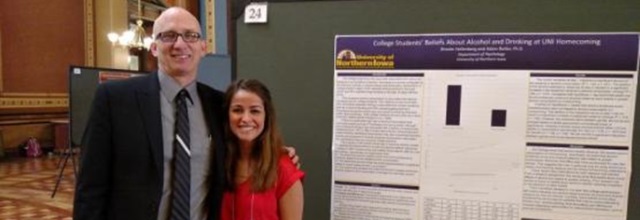Honors Program Theses
Award/Availability
Open Access Honors Program Thesis
First Advisor
Terence Moriarty, Honors Thesis Advisor
Keywords
Brain--Concussion--Diagnosis; Rugby football injuries--Diagnosis;
Abstract
Clinicians often rely on simple neuropsychological and balance tests to diagnose concussion and determine return to sport. These tests are not fully comprehensive and lack a measure of brain physiology, warranting the need for an objective biomarker, especially in sports with frequent head trauma (e.g., rugby). The high number of concussions occurring in recreational sport necessitates an affordable and accurate biomarker to easily assess the severity of trauma. The purpose of the present study was to address this issue, using functional near-infrared spectroscopy (fNIRS) to assess relative changes in oxyhemoglobin (O2Hb), deoxyhemoglobin (HHb), total hemoglobin (tHb) and hemoglobin difference (Hbdiff) in the left and right prefrontal cortex (LPFC and RPFC) during a commonly used concussion test (King-Devick (K-D)). Healthy baseline data (n=22) was compared to data collected following mild head trauma (MHT) during a collegiate rugby game (n=17) and to data collected following significant head trauma (SHT) (player-reported excessive force to the head) during the game (n=5). Major findings indicate that both Hbdiff and O2Hb were significantly lower in the RPFC following moderate head trauma in comparison to that of baseline (Hbdiff: 2.21 ± 2.03 μmol vs. 0.89 ± 1.16 μmol, p = 0.02, O2Hb: 1.96 ± 1.98 μmol vs. 0.78 ± 1.27 μmol, p = 0.03). Following significant trauma, Hbdiff was significantly lower and HHb was significantly higher in the RPFC (Hbdiff: 2.51 ± 0.42 μmol vs. 0.79 ± 1.17 μmol, p = 0.04, HHb: -0.72 ± 0.34 μmol vs. 0.06 ± 0.45 μmol, p = 0.04). Taken together, these findings indicate reduced activation of the RPFC following rugby competition. Interestingly, no significant differences were observed between conditions in K-D results (time to completion, secs) (MHT healthy baseline: 49.29 secs vs. post trauma: 47.33 secs, SHT healthy baseline: 47.34 secs vs. post trauma: 49.02 secs). Since no significant difference was found in K-D scores but there was reduced activation of the RPFC 4 detected in those subjects who had experienced significant head trauma, our preliminary results indicate that clinicians should rely on more objective assessments of brain activity in addition to the currently used concussion tests for full contact sports such as rugby. Assessing PFC activation via fNIRS may be a viable biomarker for monitoring the physiological state of the brain following a collegiate rugby game.
Year of Submission
2022
Department
Department of Kinesiology
University Honors Designation
A thesis submitted in partial fulfillment of the requirements for the designation University Honors
Date Original
5-2022
Object Description
1 PDF file (27 pages)
Copyright
©2022 Megan Benmore
Language
en
File Format
application/pdf
Recommended Citation
Benmore, Megan, "Changes in brain oxygenation of rugby players before and after head trauma" (2022). Honors Program Theses. 539.
https://scholarworks.uni.edu/hpt/539



